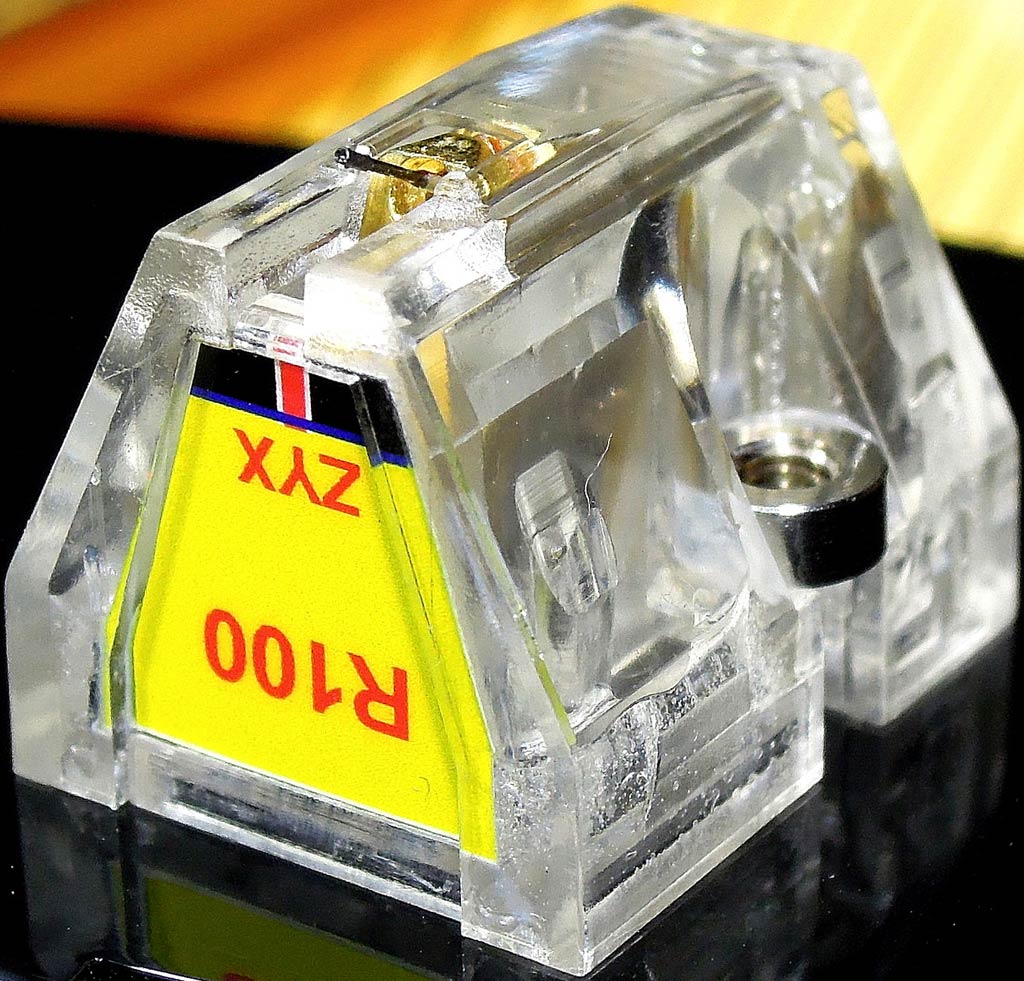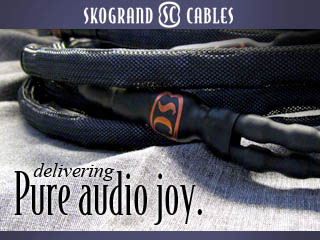The Journey Continues…..
[A]s I have noted in previous reviews in this series, famed craftsman Hisayoshi Nakatsuka has been at the cartridge designing and building business for quite a long time. As such, over these many years, Nakatsuka-San has refined his designs and assembly processes to the point where each and every cartridge emerges with the characteristics that immediately identify them as his designs. That sort of consistency is rarified in a cottage industry and even within just a single line of models from the same manufacturer.
Thanks to the U.S. importer, SORASound, my open access and journey through the ZYX line of phono cartridges continues. Just to recap, I have thus far written my impressions of the phenom that is the ZYX Yatra, and of the my experiences, and surprises with the entry level ZYX Bloom. Each provided remarkable insight in to the recorded grooves that to me were beyond expectation given their respective price points. This time I will be discussing the entry level model of the R100 Series phono cartridges. As you may recall, the ZYX Yatra is the ultimate expression of the R100 series. The ZYX R100 is the lighter weight, entry level standard version of this particular series in the ZYX line-up. With an MSRP of $1,295, it comes in at a price that roughly splits the difference between the R100 Yatra ($1,695) and the lowest priced expressive R50 Bloom ($995).
The configuration of the ZYX R100 is nearly exactly the same as that of the R100 Yatra. It sports the proprietary “Real Stereo” generator system that is found in all of Nakatsuka-San’s designs, uses single crystal six nines copper coil wires, and has an output level of .24mV. The cantilever is a boron rod and the stylus shape is a Micro-Ridge. The outer shell is a low resonance, black, plastic body. Unlike the R100 Yatra and most other cartridges in the ZYX line, the R100 however does not come equipped with a silver base. It therefore is quite light and comes in at a very lean 4.2 grams.
Due to its extremely low mass, I had to employ the lightest of the wands in the vintage EPA-500 tonearm system. The Technics EPA-A501E proved to be exactly what the doctor ordered in optimizing the performance of the ZYX R100 in this tonearm system. I settled on a vertical tracking force of 2.1 grams for the entire review period.
The break-in period for the ZYX R100 was brief and essentially the same as the ZYX R100-Yatra. It took about 20 hours for bass to firm up, for images to sharpen, and for tracking ability to improve. The ZYX R100 sounded very good straight out of the box, but did exhibit greater change in the bass region during break-in than did its ZYX Yatra and ZYX R50 siblings.
Spinning the Vinyl
To set the perspective for a true cartridge showdown one Sunday afternoon, I listened to the ZYX Yatra and then hot swapped the pre-mounted and balanced ZYX R100. Going back to the main points I had made in my notes regarding the ZYX Yatra, I played the same selections on both Yatra and then R100. Level matching was not an issue since they both have the same output level of .24mv.
As the ZYX R100 and Yatra are not only siblings but essentially the same cartridge mechanically and electrically, I figured that the sonic differences in many respects would be minimal. Listening to the same LP’s and cuts yielded remarkable differences between the cartridges. Rolling first through the three Gentle Giant LP’s, it was immediately obvious that the ZYX R100 was every bit the match of the ZYX Yatra in terms of response and tracking ability. However, that is where the similarities ended. The ZYX R100 did not approach the Yatra, and the Bloom for that matter, in demonstrating that rock steady image. The R100’s high frequencies also lacked the pristine clarity and purity that are the hallmarks of the two siblings. I’m not talking about mistracking; the ZYX R100 tracked perfectly fine. It just didn’t have as refined a level in stable, unwavering tonal purity I have come to expect from all of the other ZYX’s I’ve auditioned to this point in time. Image height and depth remained quite good, however, and were largely on par with that of the ZYX Yatra.
When playing less intense recordings such as Peter Gabriel’s Scratch My Back, I realized that the ZYX R100 was indeed a superb cartridge in its own right and in so many ways the equal of the ZYX Yatra. However, the R100 did fail to achieve that pristine and unwavering image and blackest of backgrounds that one expects on a quiet and relatively dark recording such as this one. Moving to the more dynamically challenging tracks from Peter Gabriel’s New Blood LP such as “Rhythm of the Heat,” the ZYX R100 delivered the sound with immediacy, emotion, and clarity. However, it failed to ultimately generate that convincing image that came so naturally to the sibling ZYX Yatra, nor did it deliver the visceral intensity of the final crescendo.
Having heard these results, I sought to reconfirm VTA and SRA and found that all indeed was right as rain. I therefore came to the conclusion that the differences I was hearing between the stock ZYX R100 cartridge and the ZYX (R100) Yatra were entirely due to the differences in materials employed in the cartridge body and most importantly, the absence of the heavy stabilizing, and isolating effect of the silver platform. In fact, the absence of the silver base in particular is a major departure from ZYX and other Nakatsuka-San designs. All you need to do is go look at pre-ZYX works by the master designer such as those that were sold by Accuphase and Monster Cable to realize that heavy isolating platforms were always a key ingredient to the Nakatsuka-San formula. As to the ZYX R100’s cartridge body, it is visually different but it is difficult to say if it is of a different material than that of the less expensive ZYX Bloom or the pricier ZYX Yatra.
Toward the end of the review process, I was able to confirm my suspicions regarding the isolating and stabilizing aspect of the silver base, by trying out the ZYX R100 on a new (and pricey!) Tri Planar Ultimate II tonearm that had just appeared for review. Indeed, the Tri Planar’s superiority in isolating the cartridge from external energy yielded improvement in the performance of the ZYX R100 that brought it quite close to that of the ZYX Yatra (mounted on the vintage Technics EPA500 “G” tonearm).
Summing it up
I could go on and further describe the sound I experienced with the ZYX R100, but it would not alter my inevitable conclusions, and would over-state the obvious. I personally do not quite understand the raison d’être of the R100; to my ears, it occupies a price point that evenly splits between two more musically satisfying cartridges. I understand that the silver base is an option for any ZYX cartridge, though it appears that by simply adding a silver base will yield the stellar performance of the ZYX Yatra. On the other hand, the ZYX R100 proved that it can “play with the big boys” when mated to a very high-end tonearm, such as the Tri Planar Ultimate II.
Regardless, the ZYX R100 is a star athlete in the tradition of all Nakatsuka-San cartridges. It will track anything you throw at it, it’s unfailingly neutral in balance, and stereo separation and image depth and height are superb. Yet just simply knowing the sonic differences between the ZYX R100 and Yatra stable mates, I would personally opt to dig just a bit deeper into the pockets and go for the pricier sibling. To me the difference is well worth it.
Once again, I would like to thank SORASound for the open access to the ZYX lineup. Indeed there has not been a dull moment as I explored the various levels of performance yielded by the trio of cartridges, R50 Bloom, R100, and R100 Yatra. I look forward to hopefully continuing this journey as I make my way up the ZYX food chain.
Reference Play List
| Artist | Title | Label | Year Released | Catalog | Additional Info |
| Gentle Giant | Octopus | Vertigo | 1972 | 6360 080 | UK-first pressing |
| Gentle Giant | In a Glass House | WWA | 1973 | WWA 002 | UK-first pressing |
| Townsend/Lane | Rough Mix | Polydor | 1977 | 2442 147 | UK-first pressing |
| Janis Ian | Breaking Silence | Analogue Productions | 1992 | APP 027 | 180 gram “audiophile” reissue |
| Peter Gabriel | New Blood | WOMAD | 2011 | HQ-180 gram pressing | |
| Peter Gabriel | Scratch My Back | WOMAD | 2010 | HQ-180 gram pressing | |
| Rickie Lee Jones | Rickie Lee Jones | Mobile Fidelity Sound Labs | 1979 | MFSL 1-089 | Original Half Speed Master |
| Brand X | Do They Hurt? | Passport Records | 1980 | PB 9845 | Original US pressing |
Associated Components:
- Merrill-Williams R.E.A.L. 101 Turntable
- Technics EPA-B500/A501E tonearm system with custom TelWire balanced (XLR) wire loom
- Tri Planar Ultimate II Tonearm (balanced XLR)
- Zesto Audio Andros PS-1 Phono Stage
- Pass Labs XP-20 Line Stage
- Pass Labs X350.5 Power Amplifier on Billy Bags amp stand
- Eficion F300 Speakers
- Aural Symphonics Magic Gen v2t Power Cord
- EnKlien Zephyr Power Cord
- EnKlien Zephyr Balanced Interconnects
- EnKlein Zephyr Single Ended Interconnects
- EnKlein Titan Speaker Cables
- (Page 1 of 1)

